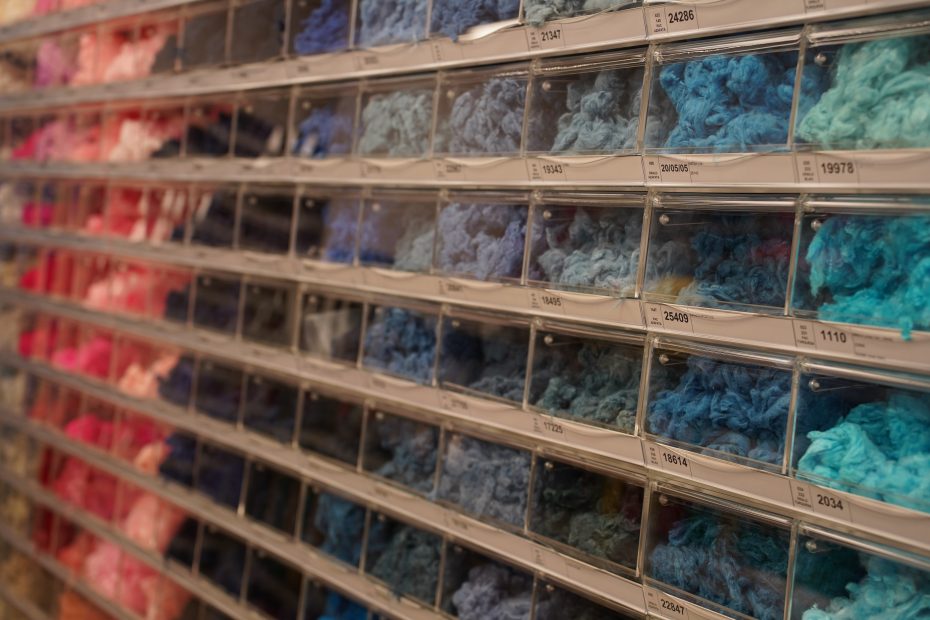As manufacturers of high quality recycled yarns, we have a wide variety of tones and combinations available, all of them developed in our colour laboratory from recycled materials. Today we are sharing one of the most important processes to ensure a truly sustainable and high quality yarn with attracttive options that also contribute to reducing our carbon footprint, the color laboratory.
The color laboratory process for manufacturing yarn involves various stages to achieve the desired color and quality of yarn. This process is crucial in the textile industry as it determines the final appearance and aesthetics of the fabric made from the yarn. Here are the key steps involved in the color laboratory process to manufacture yarn:
- The process begins with color selection, where designers or clients specify the desired color for the yarn. Color formulations are created by blending different recycled fibers to achieve the target color. These formulations are recorded for future reference.
- A small sample of yarn is selected to test the chosen color formulation. Adjustments are made if necessary to match the color precisely. This may involve fine-tuning of the formula.
- The sample is subjected to various quality control tests, to ensure the color remains stable and vibrant over time.
- Once the color is approved, the process is scaled up for larger batches of yarn.
- Quality control procedures continue throughout the process to ensure that the color and quality of the yarn meet the desired standards.
- Records and quality control results are maintained for future reference and traceability.
The color laboratory process is a critical part of the textile industry, ensuring that yarn meets the specified color and quality requirements. Proper color management and quality control in the laboratory contribute to the production of consistent and visually appealing textiles.


